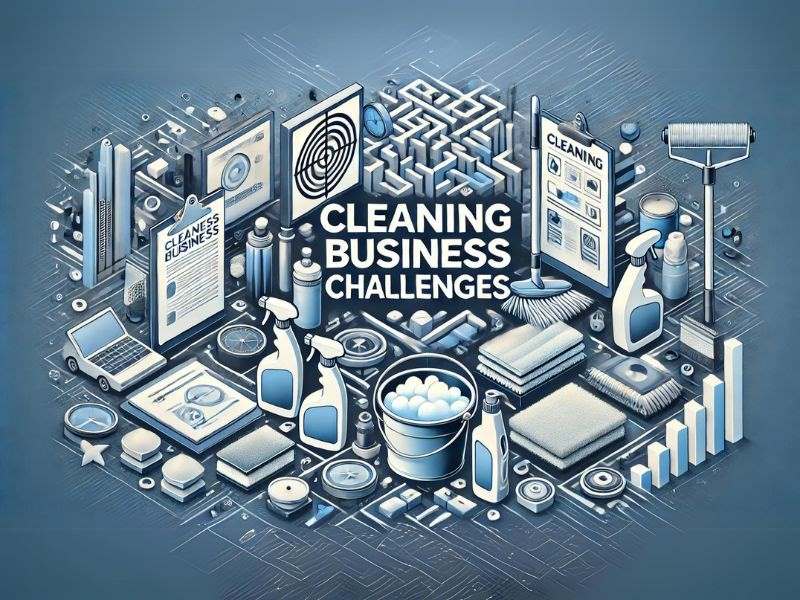Co-working spaces are dynamic environments that bring together diverse groups of people, each with unique needs and habits. Maintaining cleanliness in these spaces is vital to ensure hygiene, comfort, and productivity. However, the nature of co-working spaces presents specific cleaning challenges, such as high foot traffic, shared resources, and varying levels of cleanliness expectations among users. This guide explores these challenges and offers practical solutions to maintain a clean and welcoming co-working environment.

Cleaning Challenges
Unique Cleaning Challenges in Co-Working Spaces
- High Foot Traffic and Usage: Co-working spaces often experience high foot traffic, leading to rapid accumulation of dirt, debris, and wear on floors and furniture. Shared workstations, kitchens, and restrooms are particularly prone to heavy use and contamination.
- Diverse Users and Habits: The diversity of users—ranging from freelancers to corporate teams—means varying habits and expectations regarding cleanliness. This diversity can lead to inconsistent cleanliness levels and requires flexible cleaning strategies.
- Shared Equipment and Resources: Co-working spaces typically offer shared equipment like printers, coffee machines, and meeting rooms. These shared resources can become hotspots for germs and require frequent cleaning and disinfection.
- Flexible Layouts and Configurations: The flexible nature of co-working spaces, with movable furniture and adjustable layouts, can make thorough cleaning challenging. Areas that are constantly reconfigured may have spots that are hard to reach or clean.
Effective Solutions for Co-Working Space Cleanliness
To address the unique challenges of maintaining cleanliness in co-working spaces, consider implementing the following strategies:
- Regular Cleaning and Disinfection: Establish a routine cleaning schedule that includes regular disinfection of high-touch surfaces, such as desks, chairs, doorknobs, and shared equipment. Increased frequency of cleaning during peak hours ensures a consistently clean environment.
- Promote a Cleanliness Culture: Encourage members to take personal responsibility for their spaces. Providing accessible cleaning supplies, such as disinfectant wipes and hand sanitizers, can empower users to maintain cleanliness. Posting reminders and guidelines can also foster a culture of cleanliness.
- Use Durable and Easy-to-Clean Materials: Invest in furniture and flooring made from durable, easy-to-clean materials. For example, use laminate or vinyl flooring that withstands heavy use and is easy to mop, and choose furniture with non-porous surfaces that resist stains and germs.
- Implement Waste Management Strategies: Effective waste management is crucial in high-traffic areas. Ensure ample waste bins are available and emptied regularly to prevent overflow. Recycling bins should also be accessible to promote sustainability and reduce waste.
- Hire Professional Cleaning Services: Professional cleaning services specializing in commercial and co-working spaces can provide deeper cleaning beyond routine maintenance. They can offer specialized services, such as carpet cleaning, upholstery cleaning, and air duct cleaning, ensuring a comprehensive clean.
Maintaining Hygiene in Shared Spaces
Shared spaces like kitchens, restrooms, and lounges require particular attention to maintain hygiene:
- Kitchen Cleanliness: Regularly clean and disinfect kitchen counters, sinks, and appliances. Encourage users to clean up after themselves by providing cleaning supplies and clearly marked waste disposal areas.
- Restroom Maintenance: Restrooms should be cleaned multiple times a day to maintain hygiene. Stock restrooms with sufficient supplies like hand soap, paper towels, and toilet paper to ensure user satisfaction and promote hygiene.
- Lounge and Meeting Rooms: Clean and sanitize lounge areas and meeting rooms after each use. This practice not only maintains cleanliness but also provides peace of mind to users, knowing the space is sanitary.
Conclusion
Maintaining cleanliness in co-working spaces is essential to create a healthy, productive, and welcoming environment for all users. By understanding the unique challenges and implementing effective cleaning strategies, co-working spaces can ensure high hygiene standards, enhance user experience, and foster a positive, collaborative atmosphere. Investing in cleanliness not only benefits current members but also helps attract new clients, ensuring long-term success.


Recent Comments